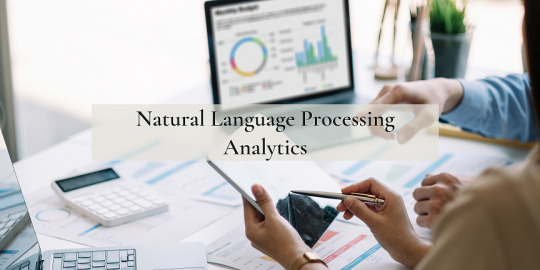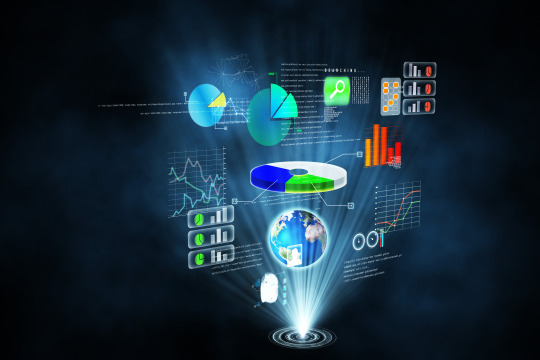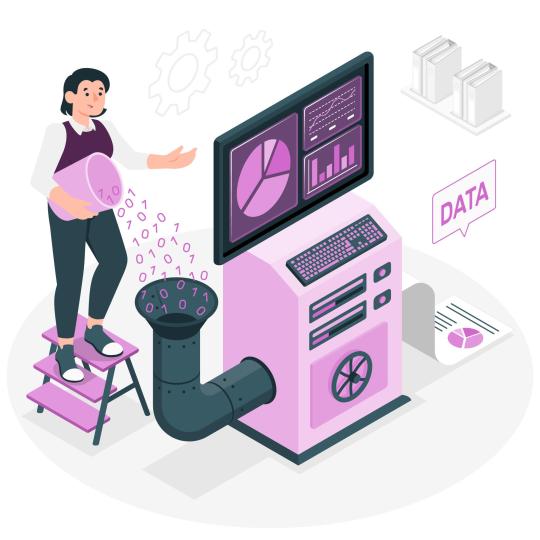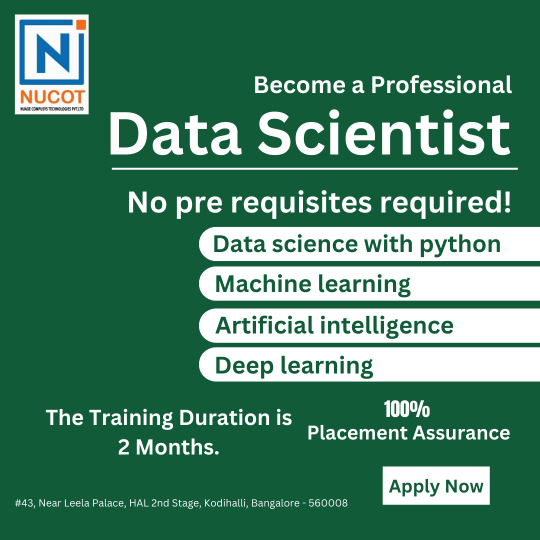#Natural language processing analytics
Text
Natural Language Processing Analytics: Unlocking the Power of Language
Natural Language Processing (NLP) is a branch of artificial intelligence that focuses on the interaction between computers and human language. By utilizing algorithms and linguistic rules, NLP enables machines to understand, interpret, and generate human language. NLP analytics, in particular, leverages these capabilities to extract valuable insights from vast amounts of textual data. This article explores the significance of NLP analytics, its applications, and the potential it holds for various industries.
Understanding NLP Analytics:
NLP analytics involves the application of NLP techniques to analyze and derive meaningful information from text-based data. It goes beyond simple keyword matching or sentiment analysis and delves into the intricate details of language, including grammar, syntax, and semantics. By employing sophisticated algorithms, statistical models, and machine learning techniques, NLP analytics allows for advanced language processing, enabling businesses and researchers to extract valuable insights from unstructured data.
Applications of NLP Analytics:
Sentiment Analysis: NLP analytics can help gauge public opinion by analyzing social media posts, customer reviews, or news articles. By determining the sentiment behind the text, businesses can gain insights into customer satisfaction, brand perception, and market trends.
Text Classification: NLP analytics enables the automatic categorization of text documents into predefined categories. This can be useful in areas such as spam detection, news classification, content filtering, and organizing large document repositories.
Named Entity Recognition (NER): NLP analytics helps identify and classify named entities, such as names of people, organizations, locations, and other relevant information. This is crucial for tasks like information extraction, content recommendation, and entity-based search.
Language Translation: NLP analytics plays a vital role in machine translation, allowing for the automatic translation of text between different languages. It has significantly improved the accuracy and fluency of translation systems, making cross-lingual communication more accessible.
Chatbots and Virtual Assistants: NLP analytics forms the foundation of intelligent chatbots and virtual assistants, enabling them to understand user queries, provide relevant responses, and engage in human-like conversations. This technology has revolutionized customer service and support, enhancing user experiences across various industries.
Text Summarization: NLP analytics techniques can condense lengthy documents or articles into concise summaries, saving time and effort for readers. It has applications in news aggregation, document summarization, and information retrieval.
Unlocking Insights with NLP Analytics:
By leveraging NLP analytics, organizations can unlock hidden insights and derive actionable intelligence from unstructured text data. They can analyze customer feedback, identify emerging trends, perform market research, automate document processing, and improve decision-making processes. NLP analytics solutions provides a powerful toolset for organizations to gain a competitive edge in today's data-driven world.
Challenges and Future Directions:
While NLP analytics has made significant strides, there are still challenges to overcome. Understanding context, handling sarcasm or irony, and dealing with language nuances remain ongoing research areas. Additionally, privacy concerns and ethical considerations regarding the use of personal data in NLP analytics need to be addressed.

Looking ahead, the future of NLP analytics holds immense potential. Continued advancements in deep learning, neural networks, and data availability will further enhance the accuracy and capabilities of NLP models. We can expect more refined language models, improved language understanding, and broader applications across industries.
Conclusion:
Natural Language Processing analytics has emerged as a transformative technology, enabling organizations to harness the power of language to gain valuable insights. From sentiment analysis to language translation and beyond, NLP analytics offers numerous applications in various domains. By embracing NLP analytics, businesses can extract meaning from vast amounts of textual data, enhance customer experiences, and make informed decisions. As this field continues to advance, we can anticipate exciting developments that will revolutionize the way we interact with and understand language.
0 notes
Text
Cosine Similarity; For checking similarity of documents, etc.
Cosine similarity is a measure of checking the similarity between two documents, texts, strings, etc.
It does so by representing the query as vectors in n-dimensional space. It then measures the angle between these vectors and gives the similarity based on the cosine of this angle.
If the queries are completely similar the angle will be zero; Thus the cosine similarity will be:
> cos(angle_between_the _vectors)=cos(0)= 1
If the queries are completely dissimilar the vectors will be perpendicular; Thus the cosine similarity will be:
> cos(angle_between_the _vectors)=cos(90)= 0
If the queries are completely opposite the vectors will be opposite to each other; Thus the cosine similarity will be:
> cos(angle_between_the _vectors)=cos(180)= -1
The cosine similarity, mathematically, is given by:

Let's see an example:
Doc1 = "this is the first document"
Doc2 = "this document is second in this order"
Vector representation of these documents:
Doc1 = [1,1,1,0,1,1,0,0]
Doc2 = [1,0,1,1,1,2,1,1]

ΣAiBi = (1*1)+(1*0)+(0*1)+(1*1)+(0*1)+(0*1)+(1*0)+(1*2)
= 4
√(ΣAi)^2 = √(1+1+0+1+0+0+1+1)
= √5
√(ΣBi)^2 = √(1+0+1+1+1+1+0+4)
= √9
Cosine similarity = 4/(√5*√9)
= 0.59
The Cosine Similarity is a better metric than Euclidean distance because if the two text document far apart by Euclidean distance, there are still chances that they are close to each other in terms of their context.
#NLP#cosine#cosine similarity#natural language#natural language processing#computer#computer science#language#computer language#euclidean#euclidean distance#maths#vectors#data analytics#big data#artificial intelligence#data analysis#AI#openAI#chatGPT#data mining#business intelligence
12 notes
·
View notes
Text
This article highlights the key difference between Machine Learning and Artificial Intelligence based on approach, learning, application, output, complexity, etc.
#Difference between AI and ML#ai vs ml#artificial intelligence vs machine learning#key differences between ai and ml#artificial intelligence#machine learning#AI#ML#technology#data science#automation#robotics#neural networks#deep learning#natural language processing#computer vision#predictive analytics#big data#future trends.
2 notes
·
View notes
Text
Ai taking over the world

Artificial intelligence (AI) has been a hot topic in recent years, with many experts predicting that it will have a significant impact on the future of humanity. Some people have even gone as far as to suggest that AI could eventually "take over the world."
While it's true that AI has the potential to be incredibly powerful, the idea that it will take over the world is more science fiction than science fact. There are several reasons why this is unlikely to happen.
First, it's important to remember that AI is simply a tool. It doesn't have its own goals or motivations. It can only do what it's programmed to do. This means that any potential negative effects of AI would be the result of human decisions, not the technology itself.
Second, there are many organizations and individuals working to ensure that AI is developed and used ethically. Researchers, policymakers, and industry leaders are all working to establish guidelines and best practices for the development and use of AI.
Third, it's important to remember that AI is not a monolithic technology. There are many different types of AI, and each has its own strengths and weaknesses. For example, machine learning and deep learning are used to analyze data and make predictions, while natural language processing is used to understand and respond to human language.
Ultimately, while it's true that AI has the potential to change the world in many ways, it's unlikely that it will take over the world. As long as we continue to develop and use AI responsibly, we can reap the benefits of this powerful technology while minimizing any potential negative effects.
In summary, it's a myth that AI will take over the world. AI is a tool, and it's the humans who operate and regulate its use. There are several organizations and individuals working to ensure that AI is developed and used ethically. It's important to remember that AI is not a monolithic technology, and each has its own strengths and weaknesses. Therefore, we must use AI responsibly to reap the benefits of this powerful technology while minimizing any potential negative effects
#Machine learning#Deep learning#Natural language processing#Computer vision#Robotics#Neural networks#Automation#Intelligent systems#Cognitive computing#Predictive analytics#Big data#Smart technology#Artificial general intelligence#Artificial super intelligence#AI Ethics#AI applications#AI developments#AI trends.#MachineLearning#DeepLearning#NaturalLanguageProcessing#ComputerVision#NeuralNetworks#IntelligentSystems#CognitiveComputing#PredictiveAnalytics#BigData#SmartTechnology#ArtificialGeneralIntelligence#ArtificialSuperIntelligence
2 notes
·
View notes
Text
#AI#Artificial intelligence#Machine learning#Deep learning#Neural networks#Natural language processing#Big data#Data science#Robotics#Computer vision#Predictive analytics
2 notes
·
View notes
Text
Harnessing the Power of Speech Analytics in Contact Center
The modern contact center, also referred to as a customer engagement center, is a dynamic hub for customer interactions. But with every call, email, and chat conversation comes a wealth of untapped data. This is where speech analytics comes in – a powerful tool that unlocks the hidden insights within customer interactions, empowering businesses to optimize their contact center solutions and elevate the customer experience.
What is Speech Analytics?
Speech analytics is a technology that utilizes natural language processing (NLP) to analyze and extract valuable information from recorded customer conversations. It goes beyond simply transcribing calls; it delves into the sentiment behind the words, identifying emotions, keywords, and recurring themes.
How Does Speech Analytics Benefit Contact Center and Engagement Center Solutions?
By leveraging speech analytics, contact centers can gain a significant edge in several key areas:
Enhanced Customer Satisfaction: Speech analytics helps identify customer pain points and frustrations. By analyzing call sentiment, you can pinpoint areas requiring improvement and proactively address customer concerns. This leads to a more positive customer experience and increased satisfaction.
Improved Agent Performance: Speech analytics provides valuable insights into agent interactions. It can identify areas where agents excel and areas where coaching and development are needed. This targeted approach empowers agents to improve their communication skills, handle complex issues more effectively, and ultimately, resolve customer inquiries faster.
Increased Operational Efficiency: Speech analytics can automate quality assurance (QA) processes, freeing up valuable agent and supervisor time. By identifying trends and recurring issues, businesses can streamline workflows, optimize call routing, and reduce average handle time (AHT).
Boosted Revenue Generation: Speech analytics can uncover upselling and cross-selling opportunities during customer interactions. It can also identify trends in customer buying behavior, allowing businesses to tailor product offerings and promotions to better meet customer needs.
Improved Compliance Management: Speech analytics ensures adherence to industry regulations and internal policies by identifying non-compliant language within calls. This proactive approach mitigates risk and fosters a culture of compliance within the contact center.
Investing in a Speech Analytics Solution
By implementing a robust speech analytics solution, businesses can transform their contact centers into true customer engagement centers. This technology empowers businesses to extract actionable insights from every customer interaction, leading to a more satisfied customer base, a more efficient operation, and ultimately, a stronger bottom line.
Ready to Harness the Power of Speech Analytics?
Celebal Technologies offers a comprehensive suite of contact center solutions, including industry-leading speech analytics. Contact Celebal Technologies today to learn how we can help you unlock the hidden potential within your customer interactions and take your customer engagement to the next level.
#Contact Center solutions#Engagement Center solutions#customer engagement center#Speech Analytics solution#natural language processing
0 notes
Text
Simplifying OCR Data Collection: A Comprehensive Guide -
Globose Technology Solutions, we are committed to providing state-of-the-art OCR solutions to meet the specific needs of our customers. Contact us today to learn more about how OCR can transform your data collection workflow.
#OCR data collection#Optical Character Recognition (OCR)#Data Extraction#Document Digitization#Text Recognition#Automated Data Entry#Data Capture#OCR Technology#Document Processing#Image to Text Conversion#Data Accuracy#Text Analytics#Invoice Processing#Form Recognition#Natural Language Processing (NLP)#Data Management#Document Scanning#Data Automation#Data Quality#Compliance Reporting#Business Efficiency#data collection#data collection company
0 notes
Text
THE FUTURE OF DATA ANALYTICS
INTRODUCTION

In the ever-evolving landscape of technology, data analytics stands as a pivotal force, driving informed decision-making across industries. As we embrace the era of big data, artificial intelligence, and advanced computing, the future of data analytics promises to be both transformative and revolutionary.
Let's embark on a journey into the realms of tomorrow's data analytics, exploring the trends, technologies, and possibilities that will shape the way we derive insights from data.
AI-POWERED ANALYTICS

The integration of artificial intelligence (AI) into data analytics is set to redefine the capabilities of predictive modeling and data interpretation.
Machine learning algorithms will play a crucial role in automating data analysis, uncovering patterns, and providing real-time insights.
AI-driven analytics will enable businesses to make faster, more accurate decisions based on a deeper understanding of their data.
EDGE ANALYTICS

The future of data analytics will witness a shift towards decentralized processing with the rise of edge analytics.
Edge computing allows data analysis to occur closer to the source, reducing latency and enabling real-time decision-making in scenarios such as IoT devices and smart sensors.
This trend will be particularly impactful in industries where instantaneous insights are critical, such as healthcare and manufacturing.
EXPONENTIAL GROWTH OF UNSTRUCTURED DATA

With the proliferation of multimedia, social media, and other unstructured data sources, the future of analytics will grapple with managing and extracting meaningful insights from vast and diverse datasets
Natural Language Processing (NLP) and advanced text analytics will become integral to deciphering the value hidden within unstructured data, providing a more comprehensive understanding of customer sentiments and market trends.
ETHICAL AND RESPONSIBLE DATA ANALYTICS

With increased public awareness about data privacy and ethics, the future of data analytics will prioritize responsible practices.
Ethical considerations in data collection, usage, and storage will become integral, requiring organizations to establish transparent and accountable data analytics frameworks.
AUGMENTED ANALYTICS

The rise of augmented analytics will empower business users with tools that automate data preparation, insight discovery, and sharing, reducing their reliance on data scientists.
Natural language interfaces and automated insights will make data analytics more accessible to a broader audience within organizations.
CONCLUSION

The future of data analytics is an exciting frontier where technological advancements and evolving trends promise to unlock unprecedented possibilities.
As businesses and industries adapt to these changes, the journey towards data-driven decision-making will become more dynamic, intelligent, and ethical.
By staying at the forefront of these developments, organizations can harness the power of data analytics to navigate the complexities of the future and gain a competitive edge in an increasingly data-driven world.
#Integration of AI and ML. ...#Augmented Analytics. ...#Data Governance & Security. ...#Natural Language Processing (NLP) ...#Rising Demand for Data Analysts. ...#Ubiquitous AI. ...#References.#dataanalytics#datascience#data#machinelearning#bigdata#datascientist#datavisualization#artificialintelligence#python#analytics#dataanalysis#ai#technology#deeplearning#programming#database
0 notes
Text
Explore the transformative impact of Natural Language Processing (NLP) in the realm of Data Science with this overview, delving into the innovative ways NLP enhances language understanding and processing for insightful data analysis. Uncover the potential of NLP to revolutionize data-driven insights and decision-making. Read more…
0 notes
Link
There are so many algorithms in machine learning but when it comes to complex data many algorithms cannot give good accuracy, then researchers realized the need for some other technique that has to be innovated to solve a problem with complex data. Ensemble learning is a technique that is innovated by researchers where we combine individual machine learning models to get a stable and robust model. Xgboost Algorithm in machine learning is a technique that comes under ensemble learning that gives very good accuracy and is designed to solve a business problem with complex data.
Here's a complete guide to XgBoost in Machine learning using Python!
Link: https://theaifusion.com/xgboost-algorithm-in-machine-learning/
#xgboost with python#data science#dataanalytics#data analytics#data analysis#deep learning#machine learning#computer vision#natural language processing
0 notes
Text
Harnessing Amazon Kinesis in Machine Learning and Artificial Intelligence
Dive into the world of real-time AI and ML with Amazon Kinesis – harnessing data's power in motion. #AI #ML #AmazonKinesis #RealTimeAnalytics
The field of Machine Learning (ML) and Artificial Intelligence (AI) is progressing at an astonishing pace, driven by the availability of vast amounts of data. This abundance of data serves as the fuel for training and refining models, propelling the advancements in this exciting domain. Amazon Web Services (AWS) has played a pivotal role in this ecosystem, offering a wide range of services and…

View On WordPress
#Alerts#Amazon Kinesis#anomaly detection#artificial intelligence#Cost Management#data analytics#data ingestion#data quality#data transformation#fraud detection#IoT#machine learning#monitoring#natural language processing#Personalization#predictive maintenance#real-time data processing#Real-time Predictions#scalability#Security#Streaming Data
1 note
·
View note
Text

Microsoft, a pioneering tech giant, has been at the forefront of this transformation, consistently pushing the boundaries of what’s possible. One such innovation is Microsoft Fabric, a cutting-edge platform that harnesses the power of AI-enabled next-generation data analytics.
https://qrsolutions.in/microsoft-fabric-unleashing-the-potential-of-ai-enhanced-next-gen-data-analytics/
#Microsoft Fabric#AI-enhanced data analytics#Next-gen data analytics#Unleashing potential#Artificial Intelligence#Predictive analytics#Advanced analytics#Intelligent insights#Scalable infrastructure#Natural language processing#Business intelligence#Cognitive services#Smart data processing#Advanced machine learning
0 notes
Text

DATA SCIENCE WITH PYTHON
Data science is a multidisciplinary field that uses scientific methods, algorithms, and statistical models to analyze structured and unstructured data, uncover patterns, make predictions, and support decision-making processes.
Data science leverages various techniques and tools from mathematics, statistics, computer science, and domain-specific knowledge to extract value from data. These techniques include regression analysis, classification, clustering, natural language processing (NLP), deep learning, data visualization, and more.
Data scientists often use programming languages like Python programming language and its associated libraries and tools for performing data analysis, extracting insights, and building predictive models.
Python has gained significant popularity in the data science community due to its simplicity, versatility, and extensive ecosystem of libraries specifically designed for data manipulation, visualization, and machine learning and utilizes libraries and frameworks such as pandas, NumPy, sci-kit-learn, TensorFlow, or PyTorch to implement data science workflows effectively.
Data science finds applications in various industries, including finance, healthcare, marketing, e-commerce, social media, manufacturing, and more. It plays a crucial role in solving complex problems, driving innovation, making data-driven decisions, and improving business performance.
Data science is already helping the airline industry, it optimizes plan routes and decides whether to schedule direct or connecting flights, forecast flight delays and offer promotional offers to individuals according to customers.
APPLICATIONS OF DATA SCIENCE
Product recommendations draw insights out of customers browsing history, and purchase history.
Data Science predicts the data by forecasting, let's take weather forecasting as an example
Data Science also aids in effective decision-making, Self-driving car is the best example
Data science helps in fraud detection, lets take example of COVID-19 vaccination
Several Benefits Of Taking Data Science Training:
Skill Development: A data science course provides structured learning and hands-on experience in various data science techniques, tools, and methodologies.
Career Opportunities: Data science is a rapidly growing field with a high demand for skilled professionals. By completing a data science course, you enhance your employability and open up a wide range of career opportunities.
In-Demand Skills: Data science skills are in high demand across industries. By acquiring proficiency in data analysis, machine learning, and data visualization, you position yourself as a valuable asset to organizations seeking to extract insights from large volumes of data to make data-driven decisions.
Problem-Solving Abilities: Data science courses equip you with a problem-solving mindset. You learn how to approach complex business problems, identify relevant data, analyze it, and derive actionable insights.
Hands-on Experience: Many data science courses offer hands-on projects and case studies that allow you to apply the concepts you learn. Working on real-world datasets and solving practical problems helps you gain practical experience and build a portfolio, which can be valuable when applying for data science positions.
Networking Opportunities: Joining a data science course gives you access to a community of like-minded individuals, including instructors, industry experts, and fellow students. Networking with professionals in the field can lead to valuable connections, mentorship, and potential job opportunities.
Continuous Learning: Data science is a rapidly evolving field with new techniques, algorithms, and tools emerging regularly.
Learn Data Science with Python to build a good and promising career with Nucot.
#data science#python#datasciencewithpython#data#programmer#ML#computer science#artificial intelligence#big data#machine learning#learn data science#data science training#data analytics#entrepreneur#data scientists#deep learning#big data analytics#neural networks#natural language processing#convolutional neural network#software engineer#computer vision
0 notes
Text
#AI#Artificial intelligence#Machine learning#Deep learning#Neural networks#Natural language processing#Big data#Data science#Robotics#Computer vision#Predictive analytics
2 notes
·
View notes
Text
Contact center solutions of the Future: Embracing the Age of Agility, Intelligence, and Empathy
In addition to fixing problems, contact centers are becoming into engagement hubs that shape consumer attitudes and brand loyalty. To successfully navigate this shift, innovative solutions that prioritize intelligence, agility, and empathy are required. The following are some trends that will affect contact centers in the future:
The Imperative of Empathy:
Customers desire personalized, human-like experiences. What to anticipate seeing:
AI for emotion: By analyzing voice and text, agents may use emotion recognition to tailor their responses, resulting in a more sympathetic and caring interaction.
Augmented Reality (AR) and Virtual Reality (VR): Combined visualization of events using augmented reality (AR) and virtual reality (VR) fosters trust and shared knowledge.
Gamification: Gamification is the process of making customer service more enjoyable by including both agents and consumers in interactive processes.
AI Advances, Humans Elevated:
Automating complex tasks frees up agents while enhancing productivity and self-service.
Conversational AI chatbots: These chatbots can respond to commonly asked questions, divert simple queries, and point users toward pertinent information.
Natural Language Processing (NLP): Quicker answers and more intelligent solutions are possible when the goal of customer requests is understood.
Speech Analytics: Based on agent calls, speech analytics identifies trends and potential improvement areas, resulting in better coaching and training.
Accepting the Omnichannel Journey:
Customer satisfaction requires seamless channel transfers.
Omnichannel routing: This method links customers, irrespective of the channel (phone, chat, email, etc.), to the right agent.
Unified agent interfaces: By giving agents a unified perspective of customer interactions across all channels, you can boost productivity.
Integration of social media: Directly responding to customer concerns on the channels of their choice to show that you are paying attention.
Cloud-Based Agility:
To accommodate changing needs, contact centers will be scalable and flexible.
Cloud-based solutions: These facilitate rapid development, reduce infrastructure upkeep, and allow for remote workforces.
API integration: Establishing connections with various business systems to offer a thorough understanding of the client experience.
Data-driven decision making: Using analytics to improve agent scheduling, resource allocation, and overall performance is known as data-driven decision making.
The Security Shield:
Protecting customer information and interactions will come first.
Enhanced authentication: For safe access, enhanced authentication combines biometric verification with multi-factor authentication.
Data encryption: During transit, sensitive data is safeguarded using data encryption.
Cybersecurity awareness: Agents adhere to stringent security protocols and get continuous training.
In summary, contact centers will profit from cutting edge technology that improves both AI and human abilities. Companies that adopt these trends may create engagement hubs that encourage enduring relationships, foster trust, and eventually boost profitability and customer loyalty. Contact Celebal Technologies today!
#Contact Center solutions#Engagement Center solutions#customer engagement center#Speech Analytics solution#natural language processing
0 notes
Text
Types of NLP Analytics Services
Language barriers to market entry will become irrelevant because of technological advancements like natural language processing (NLP). For example, organizations can automate extensive translation and localization tasks. Therefore, more personalized marketing, consumer education, and customer service become possible. Moreover, NLP integration revolutionizes corporate chatbot development targeting a multilingual consumer base.
0 notes